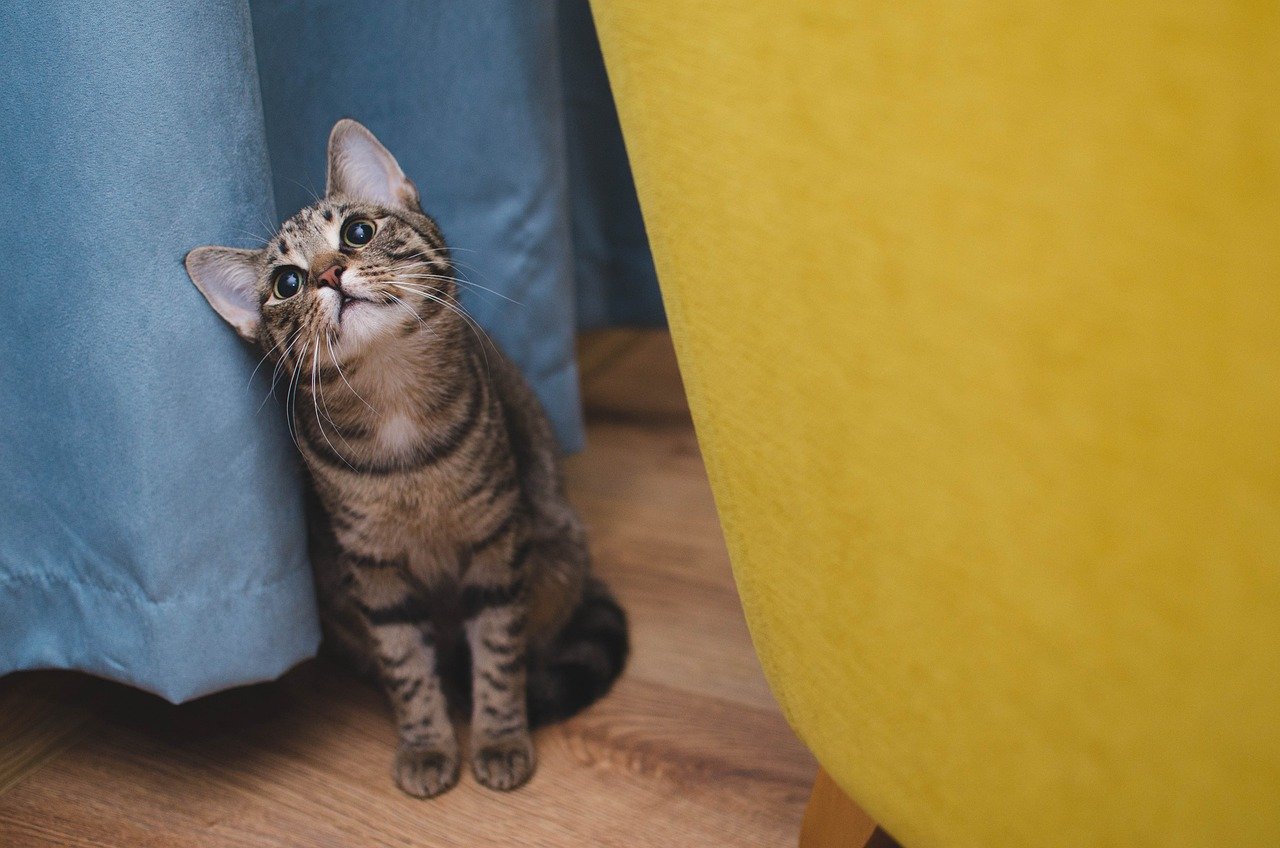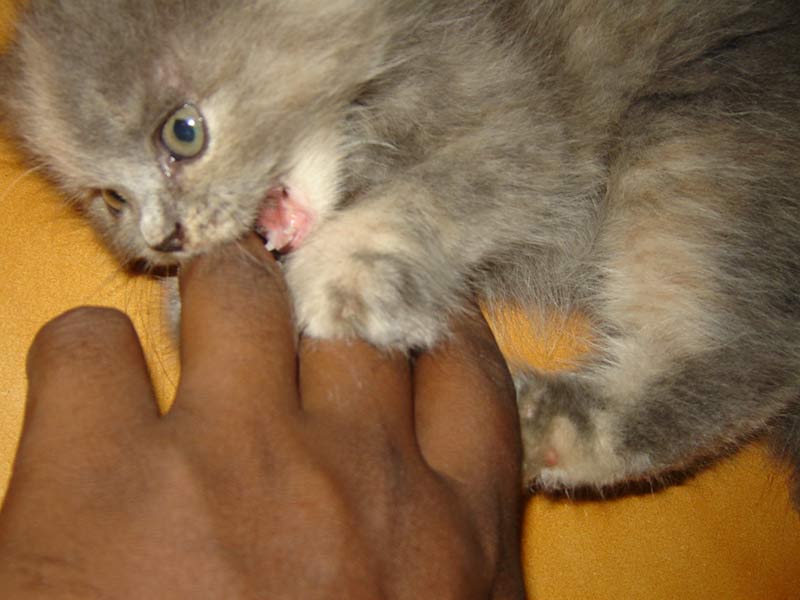How to train your cat or kitten to sit? Have you ever found yourself giggling (or maybe even slightly exasperated) as your feline friend gracefully leaps onto the counter, expertly avoids your outstretched hand for a high five, and casually strolls away? Mastering the art of the “sit” command can feel like trying to herd butterflies at times, but fear not! This guide is here to equip you with the knowledge and tools to successfully train your cat to sit reliably, all while fostering a positive and rewarding experience for both of you.
Unlocking the Secrets of the Sit
Teaching your cat to sit is more than just a fancy trick; it’s a valuable communication tool that can strengthen your bond and enhance their overall well-being. Not only can it help with basic grooming and nail trims, but it can also be a helpful cue for calming down during exciting situations, like welcoming new guests or visiting the vet.
Throughout this guide, we’ll delve into the fascinating world of feline behavior, uncover the secrets to unlocking their inner “sitter,” and explore effective training techniques that utilize positive reinforcement. We’ll discuss the importance of understanding your cat’s unique needs and preferences, establishing a consistent routine, and navigating common challenges with patience and humor. So, grab your favorite treats, settle into a comfortable spot with your furry companion, and get ready to embark on a journey of learning and connection!
Understanding Your Feline Friend: Stepping into Their Paws
Before embarking on any training adventure, it’s crucial to remember that cats are not miniature humans. They possess their unique communication styles, learning preferences, and motivations. Unlike dogs who are naturally inclined to please their humans, cats tend to be more independent and self-reliant creatures. This doesn’t mean they are incapable of learning or forming strong bonds with their humans, but it does mean that patience, understanding, and respect are paramount when venturing into the world of feline training.
The Natural Cat
In their natural environment, cats rely on their keen senses and innate instincts for survival. Sitting isn’t a behavior that typically serves them in the wild, so expecting them to readily understand your desire for them to perform this action requires some creativity and positive reinforcement.
Motivation Matters
Just like us, cats have their preferences and desires. Identifying what truly motivates your feline friend is the first step toward successful training. Does your cat go head over heels for a good scratch behind the ears? Or perhaps they can’t resist the enticing aroma of their favorite fishy treat? Once you discover their “currency” (be it treats, a feathery toy, or a good ear rub), you can use it effectively to encourage participation and reward desired behaviors.
Patience is the Purrfect Ingredient
Remember, learning takes time and practice, especially for our independent feline companions. Be prepared to invest time and dedicate yourself to consistent training sessions. Celebrate small victories, and avoid getting discouraged by setbacks. With patience, positive reinforcement, and a healthy dose of understanding, you’ll be amazed at what your furry friend can learn!
Building the Foundation: Essential Preparation for Teaching Your Cat the “Sit” Command
Before you embark on your feline training adventure, laying a solid foundation is key. Just like building a magnificent castle, you wouldn’t dream of starting without a sturdy base – and the same principle applies to teaching your cat new commands. Here, we’ll explore the essential preparations that will set you and your furry friend up for success.
Gather the Purrfect Supplies
Just like any successful explorer needs the right tools, fostering feline cooperation requires a few key items:
- Tasty Treats: Every successful journey needs delicious fuel! Opt for small, bite-sized treats your cat adores, ensuring they’re motivated to participate in the training session. Remember, variety is the spice of life, so rotate treat options to keep your feline friend engaged.
- Clicker (Optional): This handy tool can be a helpful aid in marking the exact moment your cat performs the desired behavior, allowing for precise reward timing. However, it’s not essential, and positive verbal praise can be equally effective.
- Calm and Quiet Training Environment: Imagine trying to concentrate on a complex task amidst loud noises and distractions. The same applies to your cat! Choose a quiet, familiar space free from distractions like barking dogs or busy household activities.
- Comfortable Clothing: You’ll be kneeling or crouching during training sessions, so prioritize comfortable clothing that allows for easy movement and doesn’t restrict your ability to interact with your cat.
Timing is Everything: Choosing the Purrfect Moment to Train
Just like humans, cats have their unique energy levels and moods. Choosing the right time for a training session is crucial for maximizing success. Here are some golden nuggets of timing wisdom:
- When Your Cat is Calm and Receptive: Avoid training sessions when your cat is feeling playful, overstimulated, or stressed. Opt for times when they’re relaxed and receptive, like after a nap or before mealtime when their hunger can act as a motivator.
- Avoid Distractions: A bustling household environment can be overwhelming for a cat trying to focus on learning a new skill. Choose a quiet space away from distractions like loud noises, children playing, or other pets wandering around.
Short and Sweet: Keeping Sessions Engaging and Focused
Remember, cats have notoriously short attention spans. It’s essential to keep your training sessions brief and engaging to maintain their focus. Aim for short bursts of 5-10 minutes, maximizing the opportunity for success and positive reinforcement before your cat loses interest. By keeping sessions short and sweet, you’ll leave your cat wanting more, ensuring they associate learning with positive experiences.
With these essential preparations in place, you’re well on your way to embarking on a rewarding training journey with your feline companion. Remember, patience, positive reinforcement, and a healthy dose of purrs will go a long way in teaching your cat the “sit” command – and fostering a deeper bond along the way!
Embracing Feline Purr-sonalities: A Comprehensive Guide to Understanding and Appreciating Your Unique Cat Companion
This guide delves into the fascinating world of feline behavior, providing insights into their unique communication styles, emotional complexities, and individual quirks.
Step 1: Decoding Meowgics: Understanding Feline Communication
- Beyond Meows: Explore the diverse vocalizations like chirps, trills, and growls, each with a distinct meaning.
- Tail Talk: Unravel the language of the tail, from a relaxed swish to a bristled puff, and decipher their emotional state.
- Body Language Basics: Learn to interpret feline body language, including ear positions, facial expressions, and posture, to understand their needs and intentions.
Step 2: A Universe of Personalities: Recognizing Your Cat’s Unique Character
- The Playful Pouncer: Discover breeds known for their playful nature and learn engaging games to keep them active and entertained.
- The Gentle Giant: Understand the calm demeanor of large cat breeds and explore ways to bond with them through gentle interactions.
- The Independent Investigator: Appreciate the independent spirit of breeds like the Siamese and learn ways to provide enrichment within their environment.
Step 3: Building a Purr-fect Bond: Tailoring Your Approach to Their Individual Needs
- Catering to Individual Play Styles: Identify your cat’s preferred play style, whether it’s chasing laser pointers or engaging in interactive puzzles, and tailor playtime accordingly.
- Creating a Cat-Friendly Environment: Design a stimulating space with climbing posts, scratching posts, and designated feeding and litter box areas to cater to their natural instincts.
- Respecting Their Preferences: Recognize and respect your cat’s boundaries, understanding their tolerance for petting and social interaction to avoid overwhelming them.
Step 4: Embracing the Unexpected: Embracing the Surprises and Delights of Owning a Cat
- The Unexpected Purr: Appreciate the spontaneous moments of affection and affection-seeking behaviors, regardless of their perceived reason.
- The Unexpected Mischief: Understand that cats are curious and playful creatures, and approach potential “mischief” with patience and positive reinforcement training.
- Celebrating the Uniqueness: Embrace your cat’s quirks and personality traits, recognizing that they add to their unique charm and character.
Bonus Step: Resources for Further Exploration
- Recommended books, websites, and organizations providing valuable insights into feline behavior and enrichment strategies.
This guide aims to foster a deeper understanding and appreciation for your feline companion. By recognizing their unique communication styles, respecting their personalities, and providing a stimulating and supportive environment, you can build a strong and fulfilling bond with your furry friend.

Beyond the Basics: Advanced Techniques and Troubleshooting
Teaching your cat to sit is a fantastic first step in establishing clear communication and building a strong foundation for further training. However, the journey doesn’t end there! Just like humans, cats learn and progress at their own pace, and sometimes, a little extra guidance can go a long way. This section delves into advanced techniques and explores solutions to common challenges you might encounter along the way, ensuring a successful and positive training experience for both you and your feline companion. How AI, ChatGPT maximizes earnings of many people in minutes
Shaping the Behavior: Celebrating Small Victories
Imagine this: your cat is staring intently at the treat in your hand, and their haunches begin to lower ever so slightly. While it might not be a textbook “sit” just yet, this small movement deserves acknowledgment! This is where the concept of “shaping” comes into play. Instead of expecting a perfect sit right away, we break down the behavior into smaller, more achievable steps. Each time your cat exhibits a movement closer to the desired outcome, like a slight head dip or a partial lower of the body, reward them generously! This positive reinforcement encourages them to continue in the right direction, gradually building towards a full seat. Remember, patience and celebrating even the smallest victories are key in this process. Motivation – Mind – Success – Thinking – Productivity – Happiness
Troubleshooting Common Issues: Unraveling the Mystery
Even the most enthusiastic feline learners might encounter occasional hurdles during training. Here are some common challenges you might face, along with potential solutions to help you navigate them:
- Lack of focus: A cat’s attention span can be fleeting, especially in a stimulating environment. Keep training sessions short and engaging, utilizing high-value treats that pique their interest. You can also incorporate playtime after successful training sessions to create a positive association.
- Resistance: If your cat seems hesitant or reluctant to participate, consider adjusting your approach. Ensure you’re using positive reinforcement and avoid forceful methods. Try different lure techniques, like enticingly moving the treat, or experiment with different treat options to find what motivates your cat most.
- Inconsistent response: Sometimes, your cat might sit on command one day but seem uninterested the next. This doesn’t necessarily mean they’ve forgotten what to do. It could be a sign of fatigue, hunger, or simply needing a break. Be patient and consistent with your training routine, offering praise and rewards even for attempts, and gradually increasing the difficulty as your cat becomes more comfortable. Business – Money Making – Marketing – E-commerce
Remember, every cat is an individual, and there’s no one-size-fits-all approach. If you’re facing persistent challenges, don’t hesitate to seek guidance from a professional animal trainer or behaviorist. They can help you tailor your training approach to your cat’s unique personality and learning style, ensuring a smooth and successful journey.
Building a Bond Through Training: A Journey of Trust and Connection
Training should never feel like a chore; it should be a fun and rewarding experience for both you and your cat. Remember, the ultimate goal is not just to teach them commands but to strengthen your bond and build a foundation of trust and mutual understanding. Keep training sessions positive and lighthearted, using gentle guidance and celebrating even the smallest attempts. Shower your cat with praise, affection, and their favorite treats when they succeed, creating a positive association with the training process.
By incorporating these advanced techniques and remaining patient and understanding, you can transform the process of teaching your cat to sit into a journey of shared learning and connection. Remember, the time and effort you invest will not only equip your feline friend with valuable skills but also solidify the unique bond you share. Health books, guides, exercises, habits, Diets, and more
Beyond the Sit: Expanding Your Cat’s Repertoire
Teaching your feline friend to sit is an impressive feat, but it’s just the first step on a delightful journey of feline communication. Just like humans, cats thrive on mental stimulation and learning new things. Let’s explore how you can expand your cat’s “command library” and further strengthen your bond.
Expanding the Command Library: A World of Possibilities Awaits
The success you’ve achieved with the “sit” command can be replicated for other basic commands like “come,” “stay,” and “down.” These commands not only enhance communication but also provide valuable tools for managing everyday situations like preventing them from jumping on counters or greeting guests politely. Remember, consistency and positive reinforcement are key. Use treats, praise, and plenty of patience as you introduce new commands, keeping sessions short and engaging. Fitness – Meditation – Diet – Weight Loss – Healthy Living – Yoga
Clicker Training for Advanced Tricks: Unlocking Your Cat’s Hidden Talents
For curious cats eager for more intellectual challenges, clicker training can unlock a world of possibilities. Clicker training utilizes a distinct clicking sound to mark the exact moment your cat performs a desired behavior. This precise timing strengthens the association between their action and the reward, allowing you to teach them more complex tricks like “high five” or “fetch.” Clicker training is a fantastic way to stimulate your cat’s mind, build focus, and create a fun bonding experience. Remember to start with simple behaviors and gradually increase the difficulty as your cat masters each step.
Tailoring Training to Your Cat: Every Cat is Unique
It’s crucial to remember that every cat is an individual with a personality, learning style, and preferences. Some cats may be eager to learn and pick up commands quickly, while others may be more cautious or easily distracted. Be patient, and understanding, and celebrate even the smallest progress. Adapt your training approach based on your cat’s unique needs. If your cat seems overwhelmed, shorten training sessions or break down commands into smaller, more manageable steps. Remember, the ultimate goal is to create a positive and rewarding experience for both of you. RPM 3.0 – 60% CONVERSION & Money for Affiliate Marketing
Conclusion: Celebrating Milestones and Embracing Lifelong Learning
So, you’ve successfully taught your cat to sit! Congratulations! This accomplishment is not only a testament to your patience and dedication but also a stepping stone to a deeper understanding and connection with your feline companion. By mastering this basic command, you’ve opened up new avenues for communication and interaction, making everyday life together smoother and more enjoyable.
Lifelong Learning: A Journey of Discovery for You and Your Cat
Remember, training your cat is not a one-time feat, but rather the beginning of a lifelong learning journey. Consistent, positive reinforcement training can not only teach your cat new tricks but also strengthen your bond and provide enriching mental stimulation. Imagine the joy of learning a new trick together, like “high five” or “touch,” and the shared sense of accomplishment that comes with each successful attempt. Cat accessories on Amazon
Final Notes: Resources and Seeking Support
If you’re looking for further guidance or inspiration, there are a plethora of resources available, including books, websites, and online videos dedicated to cat training. Additionally, seeking professional help from a certified animal behaviorist can be invaluable, especially if you encounter any challenges or have specific training goals.
Teaching your cat to sit is a rewarding experience that lays the foundation for a deeper connection and enhanced communication. Embrace the journey of lifelong learning with your feline friend, and you’ll both be amazed at the incredible things you can achieve together.
Other Interesting Articles
- How to Make Your Cat Really Happy: 29 Tips You May Try
- How to Train Your Cat to Stop Urine Marking? 12 Tips
- How Do Cats Communicate Each Other? 11 Body Language
- 24 Ways To Know If You Have An Extremely Happy Cat
- What Smells Do Cats Hate: 34 Scents You Must Avoid
- Everything You Need To Know About Cat Territory Marking
- 12 Reasons Why You Should Adopt A Second Cat
- 12 Reasons Cats Pee Outside the Litter Box: How To Solve
- 14 Reasons Why Cats Overgroom: Surefire Ways To Stop It
- Why is My Cat So Clingy? 13 Common Signs: 9 Caring Tips
- Is Your Cat Bored? 12 Common Signs: What You Can Do
- Stress in Cats: Causes, Symptoms, Remedies, Treatment
- 17 Common Signs Your Cat is Lonely: 10 Tips To Help Recover
- 14 Reasons My Cat is Acting Strange & Scared: What to Do?
- How Do Cats Hunt Their Prey, Mice, Bird, Fish, Rat For Food?
- How To Introduce A New Kitten To An Older Cat: 16 Tips
- 15 Reasons Why Do Cats Lick and Groom Each Other
- Domesticated Cats And Big Cats: 24 Similarities, Differences
- 21 Interesting Facts You Should Know About Feral Cats
- How to Socialize a Feral Kitten in 10 Simple Steps



